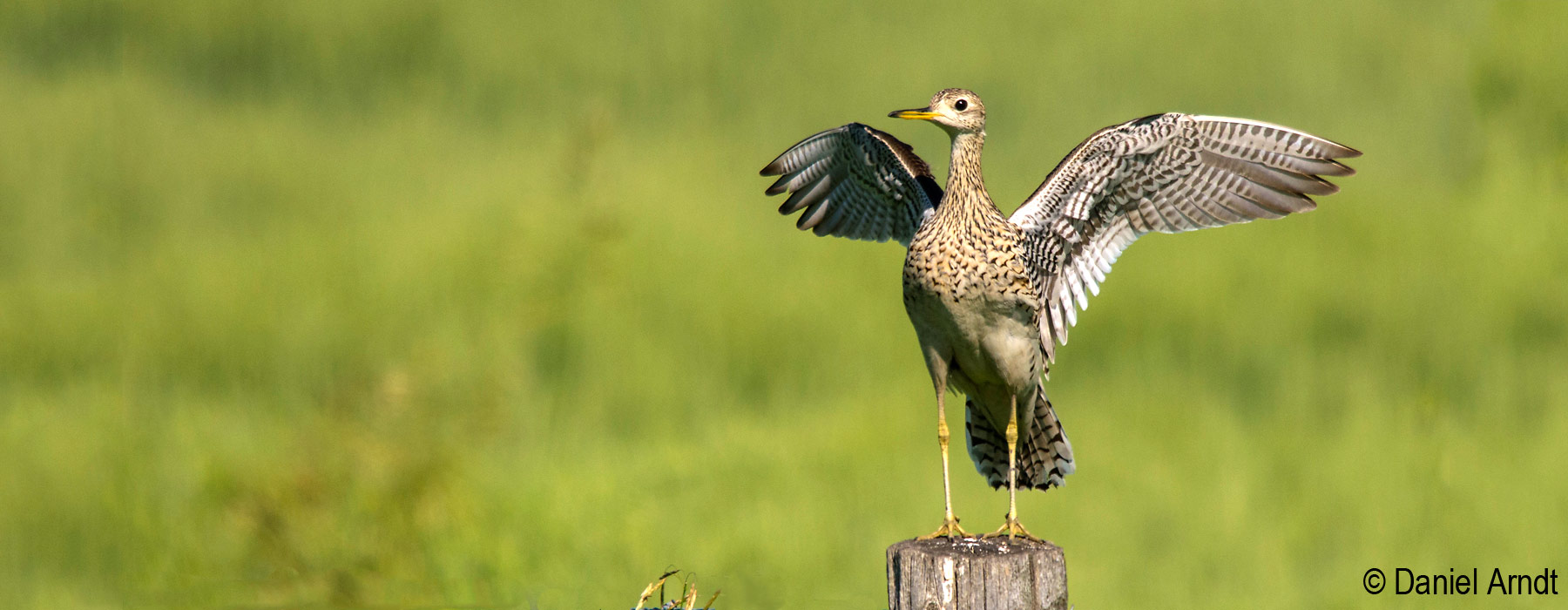Recruiting and unifying biologists from seven countries, VCE is developing a plan to guide and coordinate research and conservation priorities for grassland birds across the Western Hemisphere.
Our work unites north and south. It's a recognition that the conservation of migratory bird species cannot limit its focus to one country or region. Here are three examples of how VCE's Grasslands Program works across borders:
- Bobolink Conservation Plan – A bobolink spends more time in migration and in South America than in North America. It’s why VCE studies Bobolinks wherever they go. Our full life-cycle planning work on Bobolinks and other species that share their habitat helps to inform grassland bird conservation across the Americas.
- Midwest Landscapes Network – The rise of more intensive agriculture in the Midwest has for decades contributed to the degradation and loss of grasslands, resulting in population declines of most grassland bird species. In partnership with High Branch Conservation Services, VCE led the development of a network for promoting grassland landscapes in the Midwest. The project generated new spatial information, strategic guidance, and cross-sector collaborations that uphold the many ecological and societal values of grasslands. We created the Conservation Atlas for Midwest Grasslands, a framework on the Data Basin platform that overlays key geographic, ecological, social, and economic features to develop a network of grassland landscapes for carrying out state and regional objectives in a coordinated way. Our ultimate goal is to advance the ecological, economic, and societal benefits of native and restored grasslands.
- Prairies to Pampas: Hemispheric Grassland Bird Business Plan – The grasslands of North and South America are like mirrors. Their shared threats to grasslands and birds include: more intensive agriculture as well as replacement of grasslands with non-native pastures, crops, and forestry plantations. The avifauna in each system has consequently suffered population losses. Solutions are similar north and south. The Prairies to Pampas Business Plan was born from a gathering of biologists from 8 countries, providing the first framework for international collaboration on grasslands conservation. The Plan identifies information gaps and conservation strategies that most effectively contribute to long-term sustainability of grassland bird populations, and has served as a starting point for subsequent gatherings that are further developing and prioritizing objectives and actions for grasslands conservation across the Americas.

